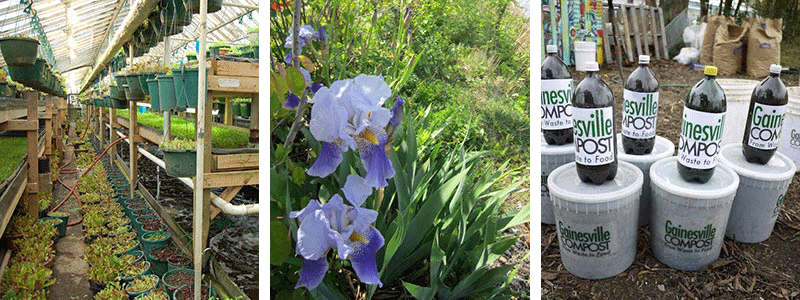Abstract
Cities are built in soil. Gardens grow in it, as do the trees that shade our streets and the grass that we lay on in the park. It absorbs and filters storm water runoff before it can reach the sewer. Healthy soil is necessary for any urban ecosystem to thrive, and yet urban soil is subject to massive stresses. Compaction from foot and vehicle traffic and a lack of organic material reduces the ability of urban soils to absorb water and support plants. Pollution from industrial sites and car exhaust lace urban soils with heavy metals and other pollutants. Long isolated from any source of nutrient replenishment, urban soils often suffer from a lack of micro-organism and fungi diversity, reducing their ability to transport nutrients and resist plant killing pathogens, further eroding their ability to support life.
Composting is the inevitable natural process by which bacteria decompose organic material into nutrient rich, biologically robust black soil that anchors and feed plant roots, retain storm water, and give living space to earthworms, bacteria, fungi, and insects. It is something of a paradox that cities are at once both a place of landfills overflowing with waste and also the place in constant need of healthy soil that can be created from that waste. Many backyards across the country have composting bins, and some large municipalities such as San Francisco and Portland have created city wide composting programs. The step between a backyard operation and a city wide operation, however, is huge, and the middle ground between the two has many of the logistical challenges of a large operation without the built in institutional resources to handle them. And yet it is at the immediate neighborhood level that closing the urban soil nutrient loop is most immediately meaningful, especially when combined other other activities that require healthy soil as a component of a larger ecological mission (i.e. urban farming, bio-remediation, or environmental education programs). Community level urban compost operations have the potential to build the soil resources of the community using only materials from that community, but careful logistical organization of the composting system is key.
Just as no two urban communities are the same, no two urban composting programs need be the same. This study seeks to understand composting as a organic process inevitably tailored to its specific urban location. The various components of a successful composting operation are organized by component into a recipe. Three successful case studies of various sizes and methodologies are then discussed in terms of each component, showing where they are similar and where they are different in composting methodology, material sourcing, social organization, funding sources, regulatory compliance, and ultimate use of the decomposed organic material.
Cases:
- Growing Power in Milwaukee, Wisconsin
- Composting Gowanus in Brooklyn, New York
- Gainesville Compost in Gainesville, Florida
